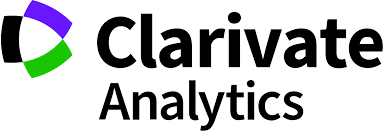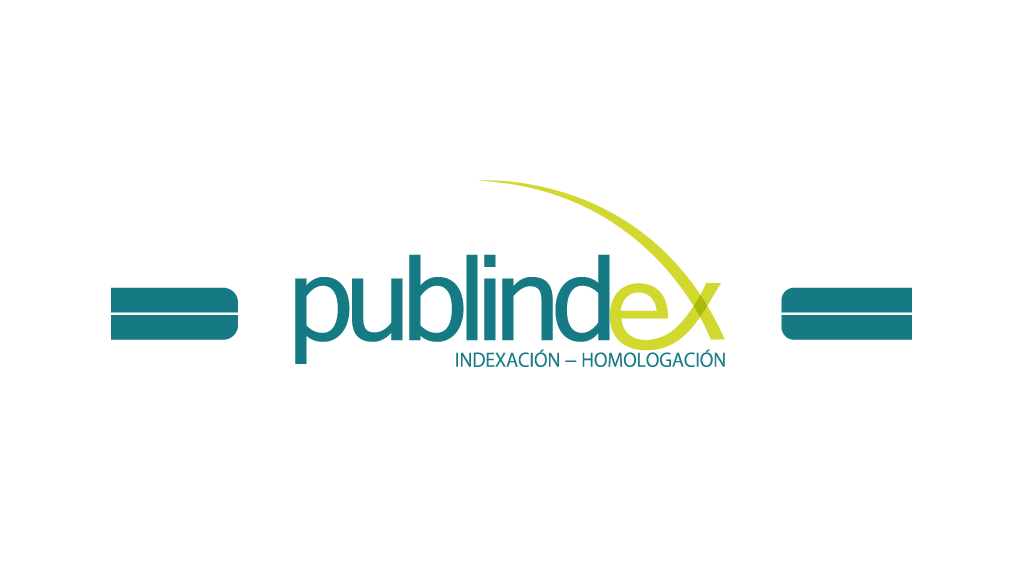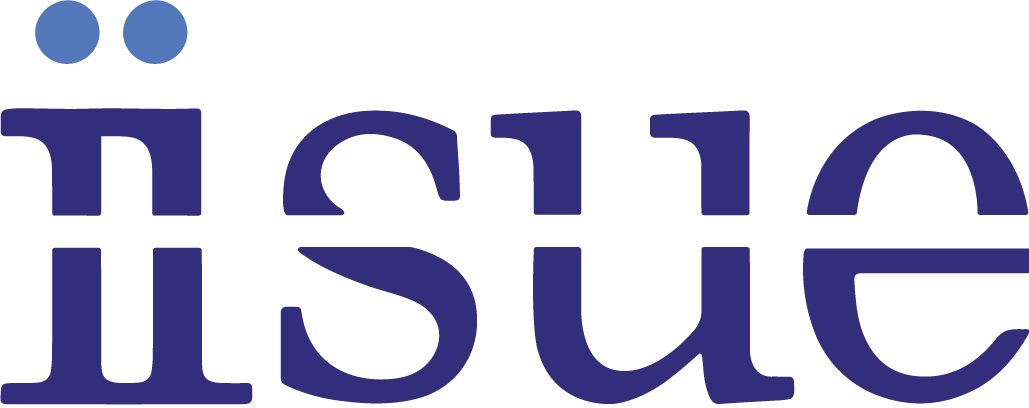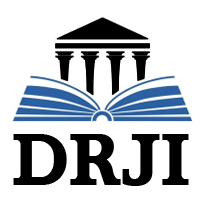Authors who publish in this journal agree to the following terms:
Acta Colombiana de Psicología complies with international intellectual property and copyright laws, and particularly with Article No. 58 of the Political Constitution of Colombia, Law No. 23 of 1982, and the Agreement No. 172 of September 30, 2010 (Universidad Católica de Colombia Intellectual Property Regulation).
Authors retain their copyright and grant to the Acta Colombiana de Psicología the right of first publication, with the work registered under Creative Commons attribution license, which allows third parties to use the published material, provided they credit the authorship of the work and the first publication in this Journal.
Abstract
The impact of new technologies has reached almost all human development. In the case of clinical psychology, has meant new advances in the understanding, assessment and treatment of various psychological problems and disorders. In this paper, four developments that have had a major expansion are reviewed: Internet-based psychological treatment, the use of virtual reality, neurofeedback, and transcranial magnetic stimulation. First, each technique or procedure is briefly presented. Then, its application to specific problems, its advantages and disadvantages are described. Finally, the development of these resources and the need to continue providing knowledge is discussed. These advances will improve their effectiveness and efficiency, according to types of patients, specific disorders, and to avoid side-effects.

References
Aleman, A. (2013). Use of Repetitive Transcranial Magnetic Stimulation for Treatment in Psychiatry. Clinical Psychopharmacology and Neuroscience : The Official Scientific Journal of the Korean College of Neuropsychopharmacology, 11(2), 53-59. doi: 10.9758/cpn.2013.11.2.53
Andersson, G., & Cuijpers, P. (2009). Internet-based and other computerized psychological treatments for adult depression. Cognitive Behaviour Therapy, 38, 196-205. doi: 10.1080/16506070903318960
Andrews, G., Cuijpers, P., Craske, M. G., McEvoy, P., & Titov, N. (2010). Computer therapy for the anxiety and depressive disorders is effective, acceptable and practical health care: a meta-analysis. PloS One, 5(10), e13196. doi: 10.1371/journal.pone.0013196
Barker, A. T., Jalinous, R., & Freeston, I. L. (1985). Non-invasive magnetic stimulation of human motor cortex. Lancet, 1, 1106-1107.
Berlim, M. T., Neufeld, N. H., & Van den Eynde, F. (2013). Repetitive transcranial magnetic stimulation (rTMS) for obsessive-compulsive disorder (OCD): an exploratory metaanalysis of randomized and sham-controlled trials. Journal of Psychiatric Research, 47(8), 999-1006. doi: 10.1016/j.jpsychires.2013.03.022
Berlim, M. T., Van den Eynde, F., & Daskalakis, Z. J. (2013). Clinically meaningful efficacy and acceptability of low-frequency repetitive transcranial magnetic stimulation (rTMS) for treating primary major depression: a meta-analysis of randomized, double-blind and sham-controlled trials. Neuropsychopharmacology: Official Publication of the American College of Neuropsychopharmacology, 38(4), 543-51. doi: 10.1038/npp.2012.237
Berlim, M. T., van den Eynde, F., Tovar-Perdomo, S., & Daskalakis, Z. J. (2014). Response, remission and drop-out rates following high-frequency repetitive transcranial magnetic stimulation (rTMS) for treating major depression: a systematic review and meta-analysis of randomized, double-blind and sham-controlled trials. Psychological Medicine, 44, 1-15. doi: b10.1017/S0033291713000512
Breteler, R., Pesch, W., Nadorp, M., Best, N., & Tomasoa, X. (2012). Neurofeedback in Residential Children and Adolescents with Mild Mental Retardation and ADHD Behavior. Journal of Neurotherapy, 16(3), 172-182. doi: 10.1080/10874208.2012.705742
Carpio, C., Silva, H., Reyes, A., Pacheco-Lechón, L., Morales, G., Arroyo, R., Canales, C., & Pacheco, V. (2008). Factores lingüísticos y consecuencias situacionales en la elección de estudiantes universitarios entre colaborar y no colaborar en tareas académicas: un análisis experimental. Acta Colombiana de Psicología, 11(2), 115-126. Recuperado de http://www.scielo.org.co/scielo.php?script=sci_arttext&pid=S0123-91552008000200011
Coben, R., Linden, M., & Myers, T. E. (2010). Neurofeedback for autistic spectrum disorder: a review of the literature. Applied Psychophysiology and Biofeedback, 35(1), 83-105. doi: 10.1007/s10484-009-9117-y
Córdoba, M., & Larreamendy-Joerns, J. (2007). Variación en estilos de experimentación y conocimiento específico. Acta Colombiana de Psicología, 10(1), 25-34. Recuperado de http://portalweb.ucatolica.edu.co/easyWeb2/acta/pdfs/v10n1/Acta10v1Art3.pdf
Dias, A. M., & van Deusen, A. (2011). A new neurofeedback protocol for depression The Spanish Journal of Psychology, 14(1), 374-84.
Fernández del Olmo, M., & Cudeiro Mazaira, J. (2004). Estimulación magnética transcraneal: Principios básicos y aplicaciones en la actividad física y el deporte. Motricidad. European Journal of Human Movement, 12, 7-20.
Frueh, B. C., Monnier, J., Elhai, J. D., Grubaugh, A. L., & Knapp, R. G. (2004). Telepsychiatry treatment outcome research methodology: efficacy versus effectiveness. Telemedicine Journal and E-Health: The Official Journal of the American Telemedicine Association, 10(4), 455-458. doi: 10.1089/tmj.2004.10.455
Fuggetta, G., & Noh, N. A. (2013). A neurophysiological insight into the potential link between transcranial magnetic stimulation, thalamocortical dysrhythmia and neuropsychiatric disorders. Experimental Neurology, 245, 87-95. doi: 10.1016/j.expneurol.2012.10.010
Gevensleben, H., Rothenberger, A., Moll, G. H., & Heinrich, H. (2012). Neurofeedback in children with ADHD: validation and challenges. Expert Review of Neurotherapeutics, 12(4), 447-60. doi: 10.1586/ern.12.22
Gonçalves, R., Pedrozo, A. L., Coutinho, E. S. F., Figueira, I., & Ventura, P. (2012). Efficacy of virtual reality exposure therapy in the treatment of PTSD: a systematic review. PloS One, 7(12), e48469. doi: 10.1371/journal.pone.0048469
Holtmann, M., Steiner, S., Hohmann, S., Poustka, L., Banaschewski, T., & Bölte, S. (2011). Neurofeedback in autism spectrum disorders. Developmental Medicine and Child Neurology, 53(11), 986-93. doi: 10.1111/j.1469-8749.2011.04043.x
Janicak, P. G., O’Reardon, J. P., Sampson, S. M., Husain, M. M., Lisanby, S. H., Rado, J. T., ... Demitrack, M. A. (2008). Transcranial magnetic stimulation in the treatment of major depressive disorder: a comprehensive summary of safety experience from acute exposure, extended exposure, and during reintroduction treatment. The Journal of Clinical Psychiatry, 69(2), 222-32. doi: 10.4088/JCP.v69n0208
Klein, D. N., Schwartz, J. E., Santiago, N. J., Vivian, D., Vocisano, C., Castonguay, L. G., ... & Keller, M. B. (2003). Therapeutic alliance in depression treatment: controlling for prior change and patient characteristics. Journal of Consulting and Clinical Psychology, 71(6), 997-1006. doi: 10.1037/0022-006X.71.6.997
Kobayashi, M., & Pascual-Leone, A. (2003). Transcranial magnetic stimulation in neurology. The Lancet Neurology, 2(3), 145-156.
Landa-Durán, P. (2009). Enseñanza de la psicología clínica conductual, presencial vs. En línea: la importancia del diseño instruccional. Acta Colombiana de Psicología, 12(1), 109-123. Recuperado de http://www.scielo.org.co/scielo.php?script=sci_arttext&pid=S0123-91552009000100010
Larsen, S., & Sherlin, L. (2013). Neurofeedback: an emerging technology for treating central nervous system dysregulation. The Psychiatric Clinics of North America, 36(1), 163-168. doi: 10.1016/j.psc.2013.01.005
Leon-Sarmiento, F. E., Granadillo, E., & Bayona, E. A. (2013). [Present and future of the transcranial magnetic stimulation]. Investigación Clínica, 54(1), 74-89.
Lofthouse, N., Arnold, L. E., Hersch, S., Hurt, E., & DeBeus, R. (2012). A review of neurofeedback treatment
for pediatric ADHD. Journal of Attention Disorders, 16(5), 351-372. doi:10.1177/1087054711427530. doi: 10.1177/1087054711427530
Loo, S. K., & Makeig, S. (2012). Clinical utility of EEG in attention-deficit/hyperactivity disorder: a research update. Neurotherapeutics : The Journal of the American Society for Experimental NeuroTherapeutics, 9(3), 569-587. doi: 10.1007/s13311-012-0131-z
Luyten, P., Blatt, S. J., Van Houdenhove, B. & Corveleyn, J. (2006). Depression research and treatment: Are we skating to where the puck is going to be? Clinical Psychology Review, 26, 985-999.
Gonzalez-Lorenzo, M., Peñate, W., Pitti, C. T., Bethencourt, J., de la Fuente, J., & Gracia, R. (2011). Efficacy of virtual reality exposure therapy combined with two pharmacotherapies in the treatment of agoraphobia. International Journal of Clinical and Health Psychology, 11, 189-203.
Meyerbroeker, K., Morina, N., Kerkhof, G. a, & Emmelkamp, P. M. G. (2013). Virtual reality exposure therapy does not provide any additional value in agoraphobic patients: a randomized controlled trial. Psychotherapy and Psychosomatics, 82(3), 170-176. doi: 10.1159/000342715
Meyerbröker, K., & Emmelkamp, P. M. G. (2010). Virtual reality exposure therapy in anxiety disorders: a systematic review of process-and-outcome studies. Depression and Anxiety, 27(10), 933-944. doi: 10.1002/da.20734
Montes González, J. A., & Ochoa Angrino, S. (2006). Apropiación de las tecnologías de la información y comunicación en cursos universitarios. Acta Colombiana de Psicología, 9(2), 87-100. Recuperado de http://www.redalyc.org/pdf/798/79890209.pdf
Moriyama, T. S., Polanczyk, G., Caye, A., Banaschewski, T., Brandeis, D., & Rohde, L. A. (2012). Evidence-based information on the clinical use of neurofeedback for ADHD. Neurotherapeutics: The Journal of the American Society for Experimental NeuroTherapeutics, 9(3), 588-598. doi:10.1007/s13311-012-0136-7
Mustaca, A. (2003). Análisis experimental del comportamiento y neurociencias. Acta Colombiana de Psicología, 2, 7-22. Recuperado de http://www.redalyc.org/articulo.oa?id=79801002
Nelson, E.-L., Bui, T. N., & Velasquez, S. E. (2011). Telepsychology: research and practice overview. Child and Adolescent Psychiatric Clinics of North America, 20(1), 67-79. doi: 10.1016/j.chc.2010.08.005
Newman, M. G., Szkodny, L. E., Llera, S. J., & Przeworski, A. (2011). A review of technology-assisted self-help and minimal contact therapies for anxiety and depression: is human contact necessary for therapeutic efficacy? Clinical Psychology Review, 31(1), 89-103. doi: 10.1016/j.cpr.2010.09.008
Nickelson, D. W. (1998). Telehealth and the evolving health care system: Strategic opportunities for professional psychology. Research and Practice, 29, 527-535. Niv, S. (2013). Clinical efficacy and potential mechanisms of neurofeedback. Personality and Individual Differences, 54(6), 676-686. doi: 10.1016/j.paid.2012.11.037
Norris, A.C. (2002). Essentials of telemedicine and telecare. New York: Wiley.
North, M., & North, S. (1994). Virtual Environments and psychological disorders. Electronic Journal of Virtual Culture, 2, 37-42.
Obando, O. L., Villalobos, M. E., & Arango, S. L. (2010). Resiliencia en niños con experiencias de abandono. Acta Colombiana de Psicología, 13(2), 149-159. Recuperado de http://portalweb.ucatolica.edu.co/easyWeb2/files/23_4917_v12n3-art12.pdf
Opriş, D., Pintea, S., García-Palacios, A., Botella, C., Szamosközi, Ş., & David, D. (2012). Virtual reality exposure therapy in anxiety disorders: a quantitative meta-analysis. Depression and Anxiety, 29(2), 85-93. doi: 10.1002/da.20910
Ossa, J. C. (2011). Funcionamiento cognitivo: un inextricable juego de pérdidas y ganancias. Acta Colombiana de Psicología, 14(2), 45-55. Recuperado de http://portalweb.ucatolica.edu.co/easyWeb2/files/23_7747_v14n2-art4.pdf
Peñate, W. (2012). About the effectiveness of telehealth procedures in psychological treatments. International Journal of Clinical and Health Psychology, 12, 475-487.
Peñate, W., Roca Sanchez, M.-J., Pitti Gonzalez, C. T., Manuel, J., Antonio, J., Fuente, D., & Gracia, R. (2014). Cognitivebehavioral treatment and antidepressants combined with virtual reality exposure for patients with chronic agoraphobia. International Journal of Clinical and Health Psychology, 14, 330-338. doi: 10.1016/S1697-2600(14)70032-8
Pérez-Wehbe, A. I., Perestelo-Pérez, L., Bethencourt-Pérez, J. M., Cuellar-Pompa, L., & Peñate, W. (2014). Treatmentresistant depression: a systematic review of systematic reviews. International Journal of Clinical and Health Psychology, 14, 145-155.
Roth, S. R., Sterman, M. B., & Clemente, C. C. (1967). Comparison of EEG correlates of reinforcement, internal inhibition, and sleep. Electroencephalography and Clinical Neurophysiology, 23, 509-520.
Rossi, S., Hallett, M., Rossini, P. M., & Pascual-Leone, A. (2009). Safety, ethical considerations, and application guidelines for the use of transcranial magnetic stimulation in clinical practice and research. Clinical Neurophysiology: Official Journal of the International Federation of Clinical Neurophysiology, 120(12), 2008-2039. doi: 10.1016/j.clinph.2009.08.016
Schutter, D. J. L. G. (2009) Antidepressant efficacy of high-frequency transcranial magnetic stimulation over the left dorsolateral prefrontal cortex in double-blind sham-controlled designs: A meta-analysis. Psychological Medicine, 39, 65- 75. doi: 10.1017/S0033291708003462
Shiban, Y., Pauli, P., & Mühlberger, A. (2013). Effect of multiple context exposure on renewal in spider phobia. Behaviour Research and Therapy, 51, 68-74. doi: 10.1016/j.brat.2012.10.007
Sterman, M. B., & Egner, T. (2006). Foundation and practice of neurofeedback for the treatment of epilepsy. Applied Psychophysiology and Biofeedback, 31(1), 21-35. doi: 10.1007/s10484-006-9002-x
Theodoroff, S. M., & Folmer, R. L. (2013). Repetitive transcranial magnetic stimulation as a treatment for chronic tinnitus: acritical review. Otology & Neurotology: Official Publication of the American Otological Society, American Neurotology Society [and] European Academy of Otology and Neurotology, 34 (2), 199-208. doi: 10.1097/MAO.0b013e31827b4d46
Titov, N. (2007). Status of computerized cognitive behavioural therapy for adults. Australian and New Zealand Journal of Psychiatry, 41, 95-114. doi: 10.1080/00048670601109873
Vanni, F., Conversano, C., Del Debbio, A., Landi, P., Carlini, M., Fanciullacci, C., ... Dell’Osso, L. (2013). A survey on virtual environment applications to fear of public speaking. European Review for Medical and Pharmacological Sciences, 17(12), 1561-1568. Recuperado de http://www.europeanreview.org/wp/wp-content/uploads/1561-1568.pdf
Wilson, G. T. (1996). Manual-based treatments: the clinical application of research findings. Behaviour Research and Therapy, 34(4), 295-314. doi: 10.1016/0005-7967(95) 00084-4.































